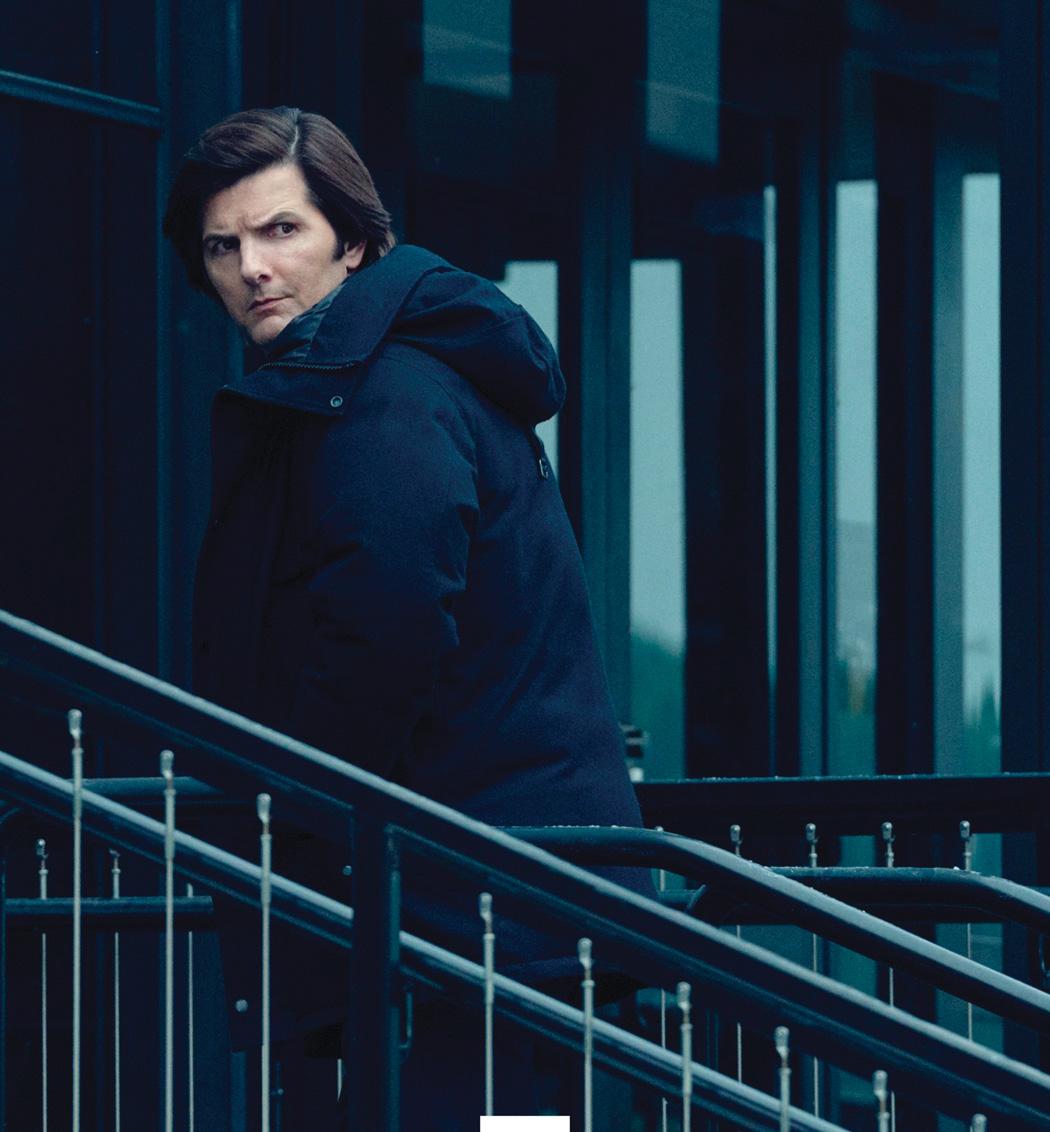But Stiller and producer and star Adam Scott recognized the potential in newcomer Dan Erickson's surreal script: Employees volunteer to undergo an operation, called severance, that bifurcates the consciousness into work life and personal life. Each morning, the severed person enters an elevator at Lumon Industries, a mysterious biotech company, and their work self or “innie” becomes conscious. At 5 p.m., the “innie” clocks out and the “outie” re-emerges with no memory of the job. Erickson came up with the concept while working a mind-numbing gig at a door factory. “It's one of those ideas where you can't believe this hasn't been done,” says Scott. “It's an immediate hook.”
And it was Stiller's idea to end Season 1 with one of the most memorable cliff-hangers in modern TV history. The innie characters stage a jailbreak, during which Scott's protagonist, Mark, discovers that the wife his outie believed to be dead is alive and trapped inside Lumon. Simultaneously, innie Mark's love interest Helly (Britt Lower) learns that her outie, Helena, is the daughter of Lumon's cultish CEO; she underwent severance to build support for the controversial procedure.
Erickson's original script explored the fallout of these revelations. But Stiller liked pausing on the precipice of the perverse love triangle—or quadrangle—of Mark torn by two halves of his consciousness toward two women. “I felt like, giving it that ending, they'd be more likely to pick us up for a second season,” Stiller adds, laughing. Apple did, immediately. Though the streamer does not release viewership data, it's one of its most discourse-dominating series. The show was nominated for 14 Emmys and won two.
But Stiller did not plan to make viewers wait three years for more. Success brought mounting pressure. “There was a little bit of a moment of overwhelmed panic,” Erickson says. “You're grateful for people's investment, and you want to do right by them.” Shooting was delayed by the writers' and actors' strikes. Costs reportedly ballooned to $200 million, one of the most expensive budgets on TV. And while the Season 1 twist hooked enough viewers to perhaps justify that expense, the second season needs not only to remind them what happened years ago, but also pay off on the mystery—a feat few puzzle-box shows accomplish.
THERE IS A MOMENT in Season 2 in which Mark's innie has to button his shirt. For the first take, Scott fumbled as he fastened it. “Ben was like, ‘What are you doing?’” Scott remembers. “I was like, ‘I've never put on a shirt before.’” After all, Mark's innie always arrives at work with his clothes already buttoned and zipped. Stiller let Scott try a few takes as if he were a toddler. “It felt kind of corny,” says Scott. “It takes forever if you're like, ‘Wow, sleeves!’ We decided there was some knowledge instilled in him with the memory of how to do it.”
The Severance team is constantly negotiating with the rules of its sci-fi world. The very idea of severance has myriad horrifying applications. In Season 1, one character severs her consciousness so as not to experience the pain of childbirth—so the only world her innie knows is giving birth and handing over her baby. It's a plot point that evokes The Handmaid's Tale, and the divide between those who can afford to avoid hardship and those who can't. As the events of Season 2 unfold, something akin to a class war breaks out between innies and outies.
Erickson—who, unlike Stiller, is a big fan of Lost and geeked out over it with Scott on set—admits to trolling the Reddit message boards for Severance. “I get such a warm feeling going through those threads,” he says. “But occasionally I would see a theory that I am like, ‘Oh, shoot, that might be better than what I have planned.’ That would get me in my head. So I had to kind of back away.”
House of Cards creator Beau Willimon was brought in, before the strikes, to refine the story for Season 2 and beyond. “We were a bit behind on schedule, but we didn’t want to make any compromises,” Erickson recalls. Willimon had proved his mastery of story not only on House of Cards but also on the Star Wars spin-off Andor. “He writes with a propulsiveness that never feels artificial. He helped streamline a lot and get everybody to the finish line.”
image [https://d19oxuimcmx63e.cloudfront.net/magtag/1963683/croppedimages/LRXI9Pxb_1737109042720.jpg]
In the first season, Scott was the only outie whose life the show explored in any real way, though we got to know many innies, played by John Turturro, Christopher Walken, and Zach Cherry, among others. Many of them have severed to escape some aspect of their lives; the series gradually builds into a parable about the dangers of compartmentalizing anguish. Now that the show delves deeper into outie stories, the actors are tasked with playing, essentially, two characters. “There are differences physically. It’s subtle. We certainly didn’t want it to feel like one of them had a limp and one of them didn’t,” Scott says. “Outie Mark’s posture isn’t quite as good as innie Mark’s. I think innie Mark has an emotional and physical optimism. They have a slightly different timbre to their voice. I hesitate talking about it because it sounds so actor-y.”
T...


